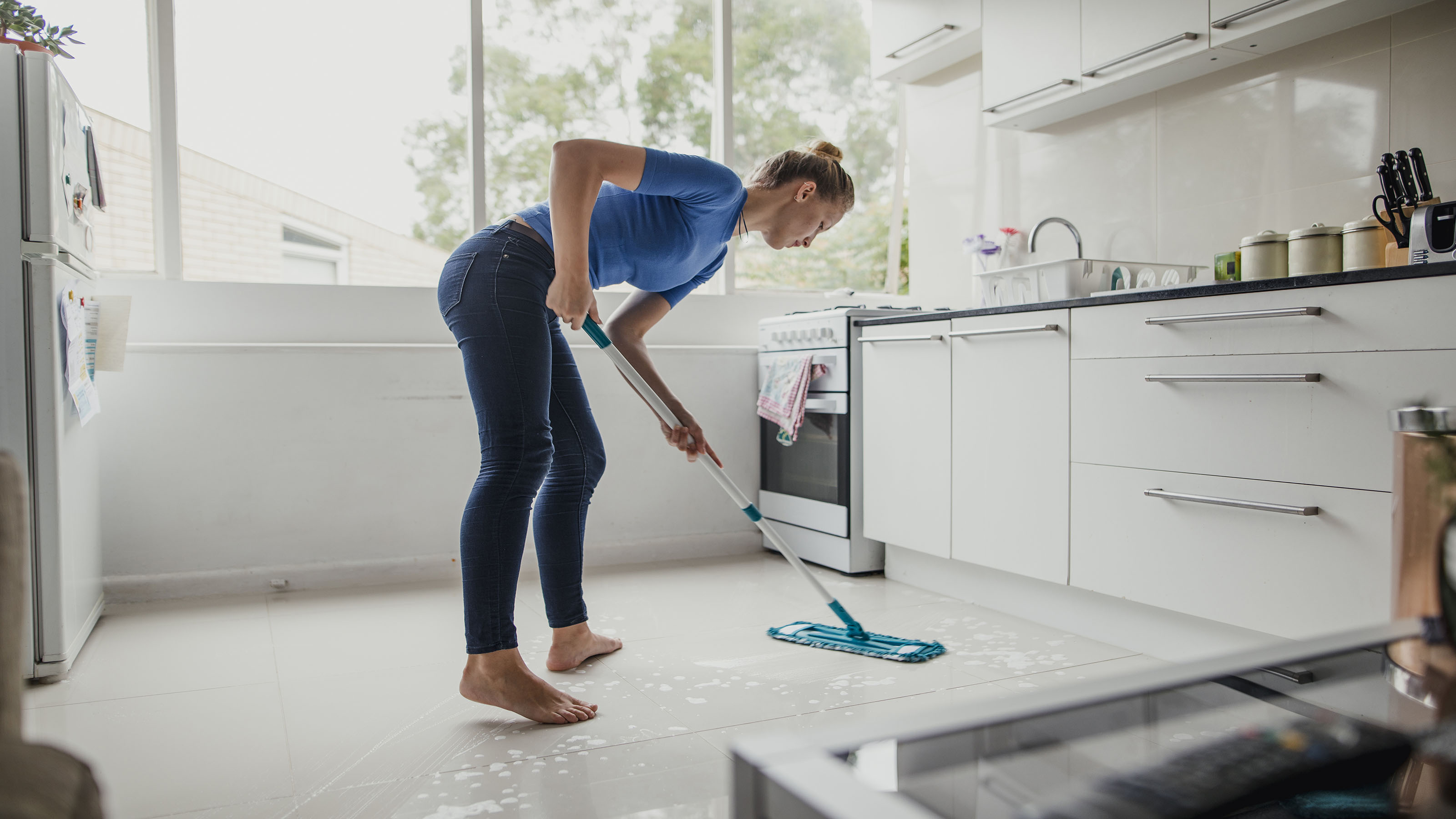Dirt and grime can easily accumulate in busy households, even if you have opted for practical hard flooring. Learning how to clean ceramic tiles will mean that your walkways are left spotless, and kept in the best condition possible. Your kitchen or bathroom won’t be fully clean until you've scrubbed the floors. Although you don’t need to do this as frequently as other surfaces, it's essential to keep the space where you prepare food hygienic.
Ceramic is a durable choice that is generally simple to maintain, however it is still important to keep on top of spot-cleans to avoid the build up of dust. Unlike cleaning carpet, if you don’t wash tiles then you can cause permanent damage through tiny scratches that will eventually dull the shine. To avoid costly replacements, it's best practice to clean tiles little and often. To make light work of tasks around the home, explore the best vacuum cleaners to find a device that works for you.
We recognize that time is of the essence and there is always a long list of tasks to tick off, which is why these step-by-step tips are designed to make cleaning simple. And, if your schedule is complicated even further by children or busy work routines, we can also recommend a variety of the best steam mops for quick everyday rinses.
How often should you clean ceramic tile floors?
Tiled floors can be lightly mopped or spot cleaned when spillages occur, but it's still crucial to have a solid routine in hand for keeping a floor sanitary, especially in cooking areas or washrooms. Depending on how large your family is, and whether you have children and pets running around, a good rule of thumb is sweeping, vacuuming, or mopping a few times a week. However, food preparation areas, such as islands or where appliances are situated, may benefit from a speedy once-over daily to remove crumbs.
We spoke to cleaning expert, Matthew Jenkins from PriceYourJob who noted the importance of prepping floors before beginning deep cleans.
"Removing any excess dirt and debris is essential before adding cleaner to any floor, as this avoids spreading the dirt around, and gives a more polished finish. Use a dust pan and broom, or vacuum to eliminate all excess dirt.
If there are any hard-to-remove remnants, you can use a plastic hand-scraper, or an old credit card to loosen them for removal."
So, not only will keeping on top of sweeping make your home environment fresher and more appealing, but it will also mean you will get the best out of any thorough cleans.
How to clean ceramic tiles with vinegar
Matthew Jenkins, cleaning expert from PriceYourJob, says, "Cleaning the grout between tiles can really make a difference to your floor. To get the best, most thorough results, it’s best to use a hot-steam grout cleaner. However, if you want to use ingredients that are more attainable, white vinegar and baking soda will get the job done."
The key to implementing achievable and efficient cleaning routines is by streamlining the products you use. White vinegar is versatile and can be used on a variety of surfaces around the home.
As ceramic is a harder-wearing material than natural stones, such as slate or marble, it can withstand the acidic nature of vinegar. Your wallet will thank you for this, as it's affordable and easy to find in grocery stores, so you can stock up easily. It’s also a natural alternative to chemical cleaners, which you might want to avoid if you have pets.
- Move furniture, such as dining chairs or coffee tables, out of the way.
- Sweep or vacuum to remove debris.
- Fill a large bucket with 2 gallons of warm water and 1 cup of white vinegar.
- Using a mop, dip into the cleaning solution and wash the floor using circular motions.
- When the whole floor is covered, leave to dry.
How to remove stains from ceramic tiles
Sometimes, your ceramic floor will need more than a maintenance clean or dust, and special attention must be paid to stubborn stains. Whether this is discoloration on lighter-colored tiles or mold in grout, targeting certain areas of tiles will brighten up the overall appearance.
While white vinegar can be used as a whole-floor cleaner, as shown above, it can also be combined with baking soda to create a more powerful mixture. This will have the texture of a paste, so it's easier to spread on specific spots that need a concentrated solution.
- Mix 1 part white vinegar to 3 parts baking soda. This should form a reasonably thick paste.
- Using a soft sponge or brush, put the paste onto the affected area and scrub lightly.
- Rinse with a mop and warm water or a damp microfiber cloth.
- Repeat as necessary until clean.
How to clean ceramic tile grout
If you have swept, mopped and scrubbed and your tiles still look dirty, it could be that the grout needs a refresh. When this becomes yellowed or affected by mold, it will disrupt the appearance of your whole interior and can be the simplest solution to buying new flooring.
Using baking soda and white vinegar, in the same method for targeting stains, will have your grout looking spotless quickly. This thick paste will cut through grime build-up between tiles and can be scrubbed more intensely with a sponge or toothbrush.
Discover more guides for the home…
Best top load washers
Best dishwashers
Best dryers
Best steam mops
Best robot vacuums

